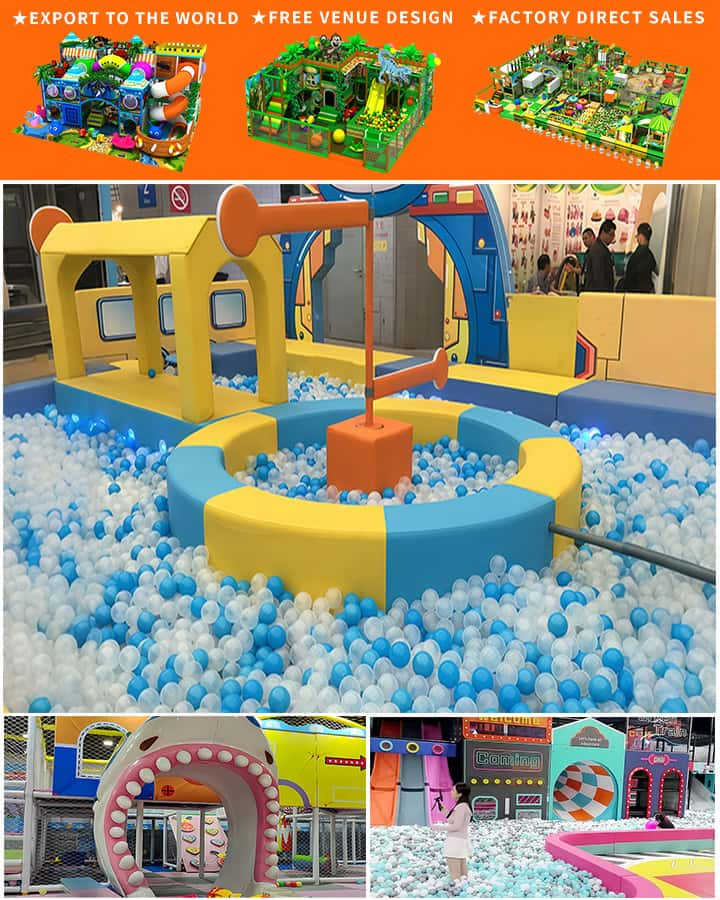Introduction
Early childhood is a critical period in human development, where experiences shape the brain’s architecture and set the foundation for future learning, behavior, and health. One of the most effective ways to nurture young minds and bodies is through engaging indoor play spaces. These environments offer a safe and stimulating setting for children to explore, learn, and grow. This article delves into the importance of indoor play spaces for early childhood development and highlights creative ideas to design these spaces effectively.
The Importance of Indoor Play Spaces
Indoor play spaces are more than just areas where children can pass the time; they are crucial for various aspects of development:
Cognitive Development
Indoor play spaces equipped with puzzles, building blocks, and interactive toys stimulate cognitive functions such as problem-solving, spatial awareness, and critical thinking. Activities that require children to manipulate objects or follow sequences help develop their logical reasoning skills.
Social Skills
Shared indoor play spaces encourage interaction among peers, fostering essential social skills. Through cooperative games and group activities, children learn to communicate, share, and resolve conflicts amicably. These interactions are fundamental in developing empathy and emotional intelligence.
Physical Development
Indoor play areas designed with climbing structures, balance beams, and soft play equipment promote physical fitness and motor skills. These activities enhance coordination, strength, and flexibility, which are vital for overall physical health.

Emotional Well-being
A well-designed indoor play space offers a sense of security and comfort, contributing to emotional well-being. Colorful decor, cozy corners, and sensory elements can create a soothing environment where children feel relaxed and happy, reducing stress and anxiety.
Designing Effective Indoor Play Spaces
To maximize the benefits of indoor play spaces, careful planning and creativity are essential. Here are some strategies to consider:
Safety First
Safety is paramount in any play area, especially for young children. Ensure that all equipment is age-appropriate and meets safety standards. Use soft flooring materials like foam or rubber mats to cushion falls, and regularly inspect the space for hazards.
Diverse Activities
Incorporate a variety of activities to cater to different interests and developmental stages. Include quiet zones with books and puzzles for introspective play, as well as active zones with slides and climbing frames for energetic play. Sensory tables with water, sand, or rice can also provide tactile stimulation.
Flexible Furniture
Invest in versatile furniture that can be easily rearranged to adapt to different activities. Movable shelves, foldable tables, and stackable chairs allow for quick transformations of the space, encouraging spontaneous play and exploration.
Natural Elements
Integrate natural elements such as plants, wooden toys, and stone textures to create a connection with nature. Natural materials not only add aesthetic appeal but also promote a sense of calm and well-being.
Imaginative Play Areas
Design dedicated areas for imaginative play, such as a pretend kitchen, doctor’s clinic, or construction site. Props like costumes, play food, and tools can spark creativity and role-playing, enhancing cognitive and social skills.
Examples of Indoor Play Spaces
The Sensory Room
A sensory room equipped with fiber-optic lights, bubble tubes, and interactive panels can provide a multisensory experience. This space is particularly beneficial for children with sensory processing disorders but can be enjoyed by all, offering a break from the usual stimuli.
The Reading Nook
A cozy reading nook with bean bags, pillows, and a small book collection creates an inviting atmosphere for storytime. This area encourages literacy and a love for books, supporting language development and imagination.
The Creative Corner
A creative corner stocked with art supplies such as crayons, markers, glue, and construction paper allows children to express themselves artistically. Display boards or walls can showcase their creations, boosting self-esteem and encouraging further creativity.
Conclusion
Indoor play spaces are vital for the holistic development of young children, offering cognitive, social, physical, and emotional benefits. By designing these spaces thoughtfully and creatively, caregivers and educators can provide enriching environments that support growth and learning. Investing time and resources in creating diverse, safe, and stimulating indoor play spaces can make a significant difference in a child’s early years, laying the groundwork for a lifetime of curiosity, creativity, and well-being.




